Ja Studio & Tadj-Farzin Studio Proposal for Kaohsiung Maritime Cultural & Popular Music Center
By Bustler Editors|
Wednesday, Dec 8, 2010
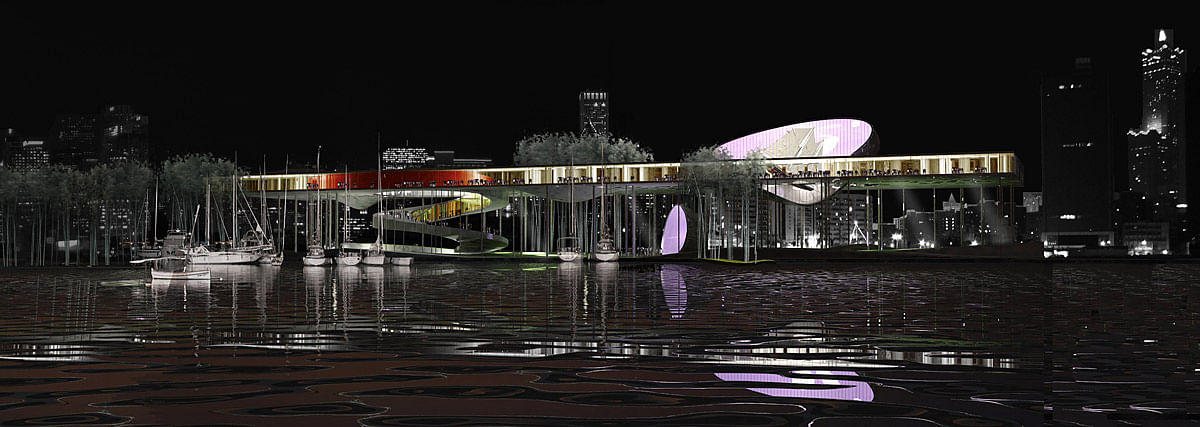
Related
Toronto-based Ja Architecture Studio, in collaboration with Tadj-Farzin Studio, have sent us their proposal for the Kaohsiung Maritime Cultural and Popular Music Center competition.
The international competition aims to make Kaohsiung, Taiwan an incubator of the pop music industry in Southern Taiwan and throughout the Asian pop music network. The announcement of the final winner is expected for mid-January 2011.
Project Description:
Our project is an effort to find simple pragmatic solutions for the Urban, Landscape and Architectural challenges of the site, yet allow for an uncompromised layer of surreal to flow through the site and claim its presence.
The proposal is three expansive but light buildings that float above a waterfront park and use the unique geometry of the port to define an urban marine square for the city of Kaohsiung.
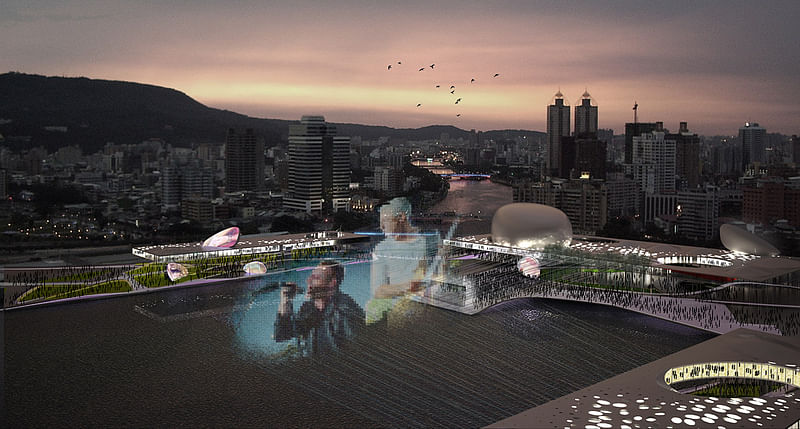
Architecture
Building typology- Porous biscuit is our recipe to create buildings on pilotis that would urbanistically function. Waterfront locations require buildings that are accessed from both city and waterfront sides. Although many building types with two active fronts can be envisioned, in most cases the very bulk of the building becomes a separator in the city – water relationship. By raising the building, our proposal seamlessly connects the city and the water and guarantees public access and public nature of such a key urban location. By incorporating a thin-porous building plate floating above a retail embedded landscape the proposed typology would eliminate the common shortcomings of the pilotis and creates a vibrant urban shaded area suitable for the subtropical hot and humid summers of Kaohsiung.
The functional strategy- The three main buildings on the site are aligned with the three sides of the port. The North and West buildings would contain the Pop Music functions and the east building along the wharf would provide the Marine Culture spaces. The functional complexity of the project is resolved on three sectional layers; parking/service level, park level and elevated building lobby. The main ingredients of the architecture are:
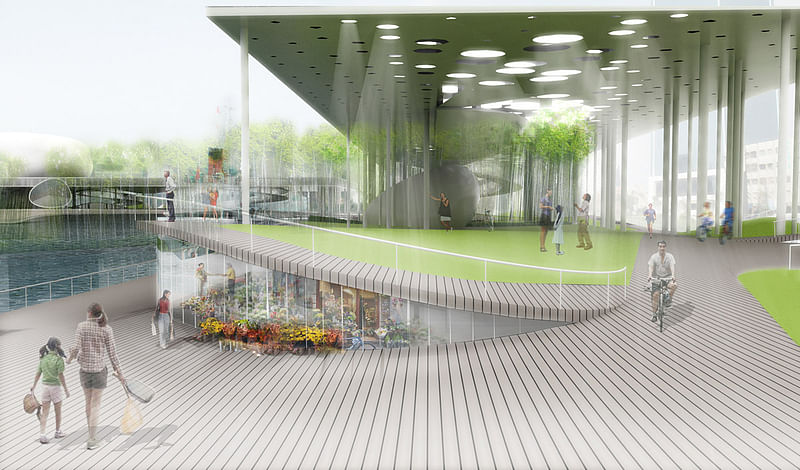
Spiral ramp/entrance- Visitors would take the spiral ramps to go up from the ground to the lobby level or to the roof of the buildings. The location of the spiral ramps is in the proximity of major access points of the site. Yingxiong Rd. and Seashore Rd. intersection has been defined as the main vehicular and pedestrian access point to the project and consequently the main entrance/spiral ramp to the north building is located in close proximity to this intersection.
Each ramp on its spiral way up gradually splits to form two flows, one to the interior of the ramp thickness and other directly to the roof. The flow leading to the interior spiral would be controlled and used by the building users however the part of the ramp that have access to the roof can be used by the general public.
Connective lobby- The elevated lobby of the building would be the connective tissue for the programmatic elements of the project. This connective tissue is punctured by an array of elliptical voids providing light and air to the interior of the building as well as the pilloti below. The surface of each void tubes is clad with the mirrored glass to reflect the captured light down while not blocking the interior visual continuity of the lobby.
Programmatic nodes- Performance halls, exhibition spaces, incubation centers,… would be the functional nodes that are all accessed from the connective lobby. The location of each node is decided based on the theme of the building, Marine Culture vs. Pop Music, and the proximity of the nodes to the entrance spirals and exits. Functional nodes with distinct form and figures have been used in contrast to the quite sublimity of the elevated buildings to create moments of distinct notes along the quiet horizontal lines of the biscuit buildings.

Landscape
The landscape proposal of the scheme overlays two approaches to the design of the green open space; The contemporary approach of performative landscape on one side and the traditional approach of painting with nature on the other. Overlaying of the two approaches of dealing with landscape has been used to allow each approach to be autonomous and truthful to its essence. The first approach focuses on ecology and sustainability of the site and the latter relies more on the sensual role of the nature in the urban environment. The key elements of the landscape proposal are:
The park- The public park is the performative component of the landscape. It re-surfaces the area of the site that has been released by raising the buildings with pedestrian and bicycle pathways, congregation platforms and the outdoor performance area. To address the parking and service space requirements, and also to provide private access to the buildings above, a series of half-level underground parking and service parcels are embedded into the landscape. The frontage of these elevated green parcels would be light commercial units that would give life, natural surveillance and vibrancy to the park. The green parcels at the south west end of the site would blend in with the geometry of the existing Sightseeing Terrace building and extend the beauty of this structure throughout the site.

Green Dragon- A free flow of bamboo trees move through the site and tie the three main buildings as well as the east and west parcels of the land. The bamboo flow would resist the strong winds on the site, retain the run-off storm water at its base (bio-swale), replace the notion of Red Carpet with Green Carpet at key access points to the buildings and last but not least the green dragon would dance in the wind, and create a surreal tree-top view to the landscape from the elevated buildings, reminiscent of scenes viewed from the vantage point of weightless mythical characters in the cinema of East Asia.
The TVs in the park- The interactive exhibit areas both for pop music and marine culture are housed in five giant TVs dropped across the landscape of the site, juxtaposing the extreme drama of pop music onto the everyday intimacy of an urban park.

Urban
Marine Square- The urban strategy of the project is to use the orthogonal shape of the site and the large scale of the program to frame and create a marine square at the intersection of Love River, port and the city. The three main buildings would spatially define the square and contain the noise inside the courtyard. The open stage platform with its mobile extension would be the focal point of this urban space.
In order to transcend the events held in the open stage theater from the site scale to the citywide scale, a digitally augmented image of the stage would be projected into the space of marine square at a much larger scale and allow the spectacle of pop music become the giant performing ghosts of the Kaohsiung skyline.
The technique used to generate the digitally augmented reality would be weaving imagery using the light rays projected from the projectors installed on the edge the biscuit buildings into the ultra-sound fog created from the port water.
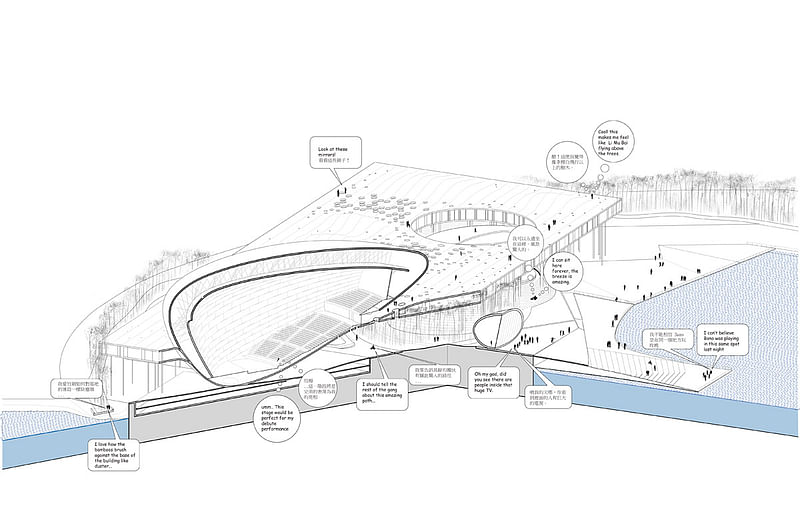
By placing the outdoor performance stage and the digitally augmented scenes in the center of the marine courtyard the capacity of outdoor performance area can potentially overflow from the immediate auditorium to the whole perimeter of the courtyard including the park piloties, elevated buildings and even on the roofs, suddenly the marine courtyard would turn into a one of a kind giant outdoor performance space with ten times larger capacity than its outlined requirement; a potential inherent in the unique geometry of the site.
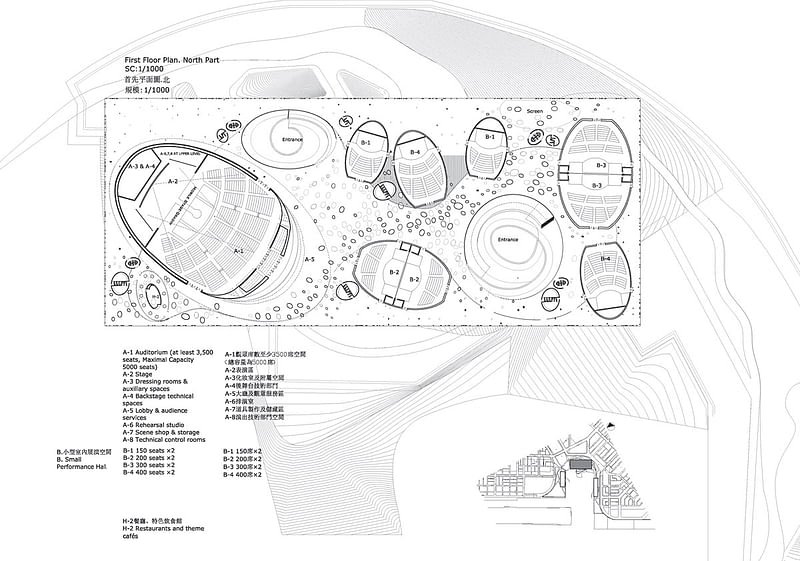
See more plans and diagrams in the image gallery below:

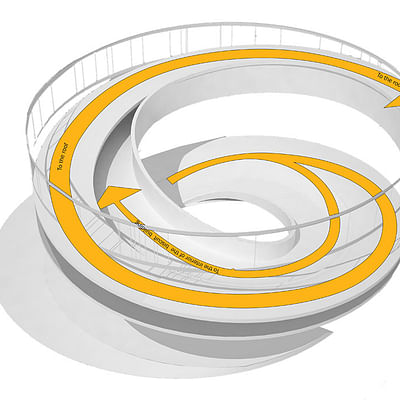
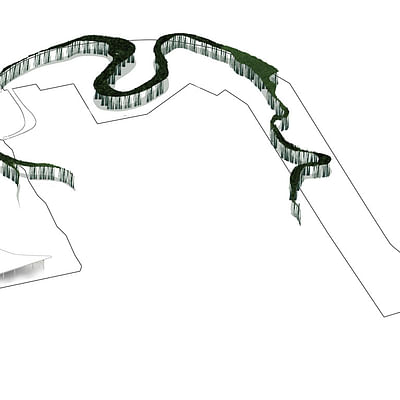


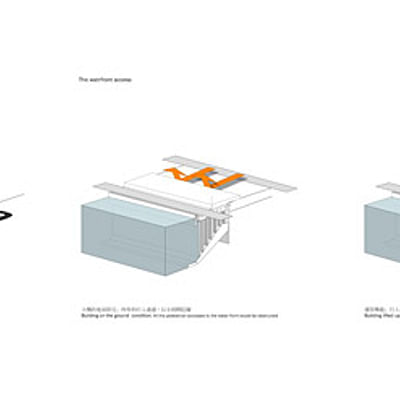

Share
0 Comments
Comment as :